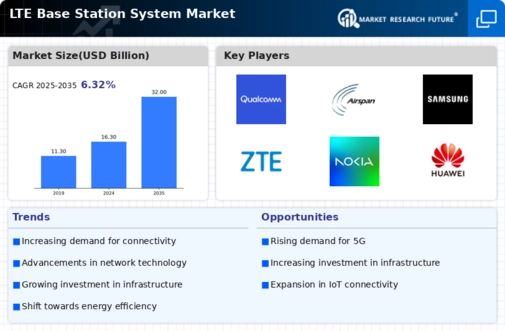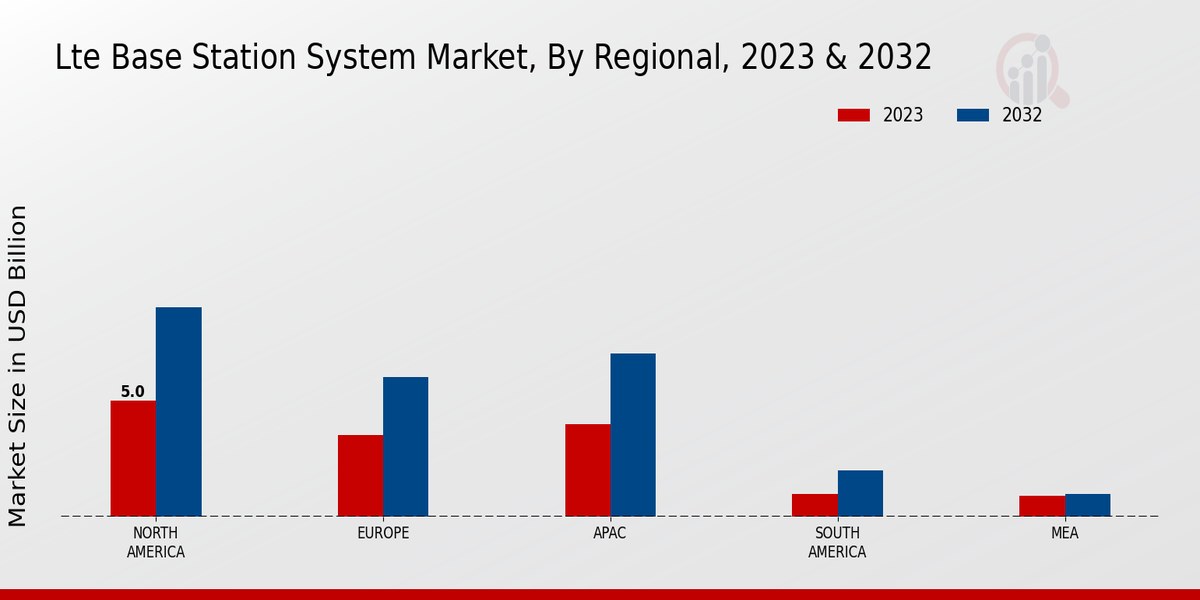Market Growth Projections
The Global LTE Base Station System Market Industry is poised for substantial growth, with projections indicating a market value of 16.3 USD Billion in 2024 and an anticipated increase to 32.0 USD Billion by 2035. This growth trajectory suggests a compound annual growth rate of 6.33% from 2025 to 2035. The increasing demand for mobile data services, coupled with technological advancements and government initiatives, supports this optimistic outlook. As operators strive to meet consumer expectations for high-speed connectivity, the expansion of LTE infrastructure becomes imperative, thereby driving market dynamics and fostering a competitive landscape.
Emerging Markets and Urbanization
Emerging markets and urbanization present substantial opportunities for the Global LTE Base Station System Market Industry. Rapid urbanization in regions such as Asia-Pacific and Africa drives the need for advanced telecommunications infrastructure to support growing populations and economic activities. As urban areas expand, the demand for reliable mobile connectivity increases, prompting investments in LTE base stations. Furthermore, emerging economies are witnessing a rise in mobile subscriptions, which further fuels the need for enhanced network capabilities. This trend is likely to sustain a compound annual growth rate of 6.33% from 2025 to 2035, indicating robust market potential.
Increasing Adoption of IoT Devices
The increasing adoption of Internet of Things (IoT) devices is a significant driver for the Global LTE Base Station System Market Industry. As industries integrate IoT solutions for automation and data collection, the demand for reliable and extensive network coverage intensifies. LTE networks provide the necessary bandwidth and low latency required for IoT applications, such as smart cities, connected vehicles, and industrial automation. This trend is expected to contribute to the market's growth, with projections indicating a market value of 32.0 USD Billion by 2035. The proliferation of IoT devices necessitates the expansion of LTE infrastructure, thereby enhancing the overall market landscape.
Government Initiatives and Investments
Government initiatives play a pivotal role in the expansion of the Global LTE Base Station System Market Industry. Various countries are investing heavily in telecommunications infrastructure to enhance connectivity and support economic growth. For instance, national broadband plans and subsidies for rural connectivity initiatives are being implemented to bridge the digital divide. These investments not only stimulate the market but also encourage private sector participation, leading to innovative solutions and improved service delivery. As governments prioritize digital transformation, the demand for LTE base stations is likely to increase, fostering a conducive environment for market growth.
Rising Demand for High-Speed Connectivity
The Global LTE Base Station System Market Industry experiences a surge in demand for high-speed connectivity, driven by the increasing reliance on mobile data services. As of 2024, the market is valued at 16.3 USD Billion, reflecting the growing need for robust network infrastructure to support applications such as streaming, gaming, and IoT. The proliferation of smart devices and the expansion of 5G networks further amplify this demand. This trend is expected to continue, as consumers and businesses alike seek faster, more reliable internet access, thereby propelling the growth of the LTE base station systems.
Technological Advancements in Network Infrastructure
Technological advancements significantly influence the Global LTE Base Station System Market Industry. Innovations such as Massive MIMO, beamforming, and network slicing enhance the efficiency and capacity of LTE networks. These technologies enable operators to optimize their existing infrastructure while accommodating the growing data traffic. As the market evolves, the integration of artificial intelligence and machine learning into network management systems is anticipated to further streamline operations and improve user experience. The continuous evolution of technology not only drives the demand for new LTE base stations but also encourages upgrades to existing systems, thereby sustaining market momentum.
























Leave a Comment